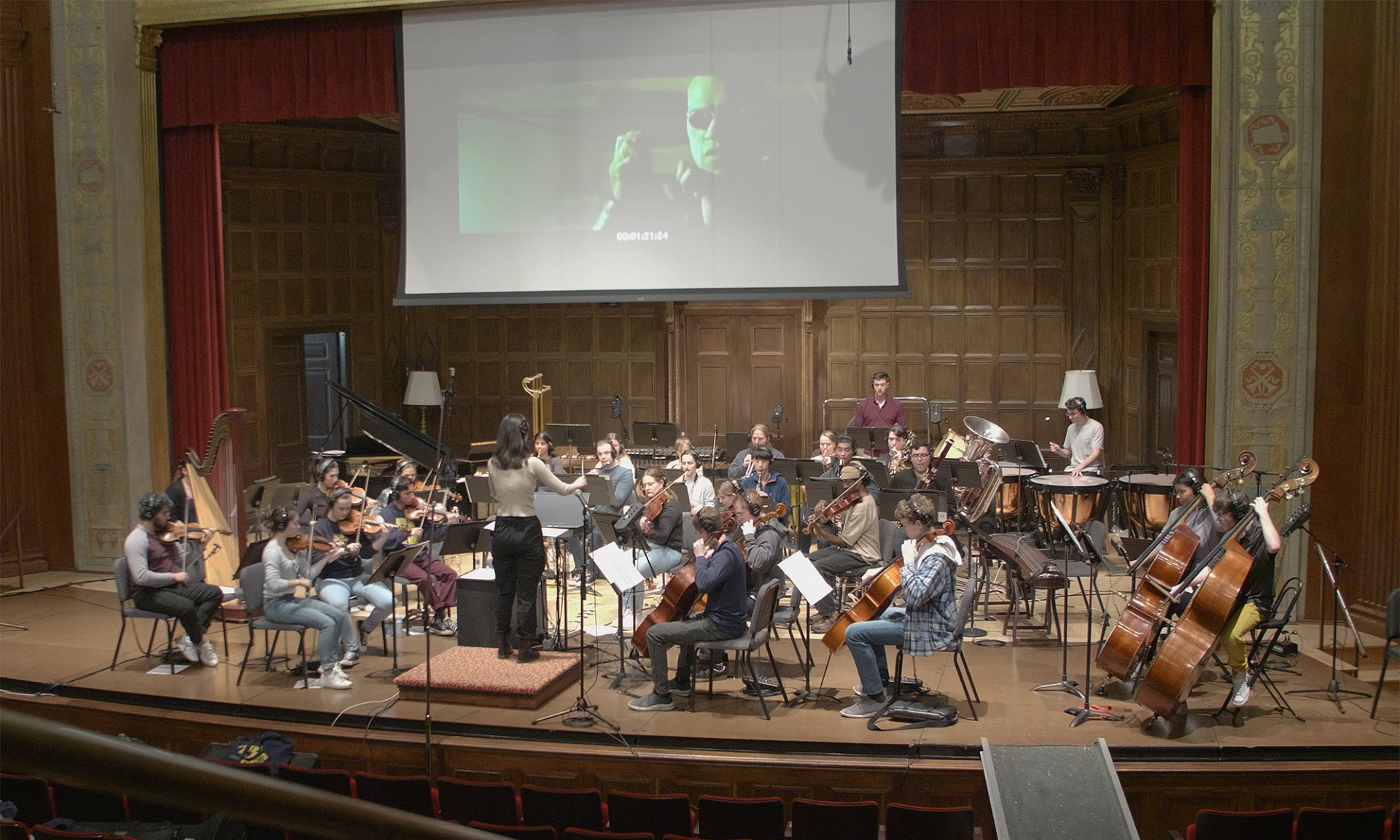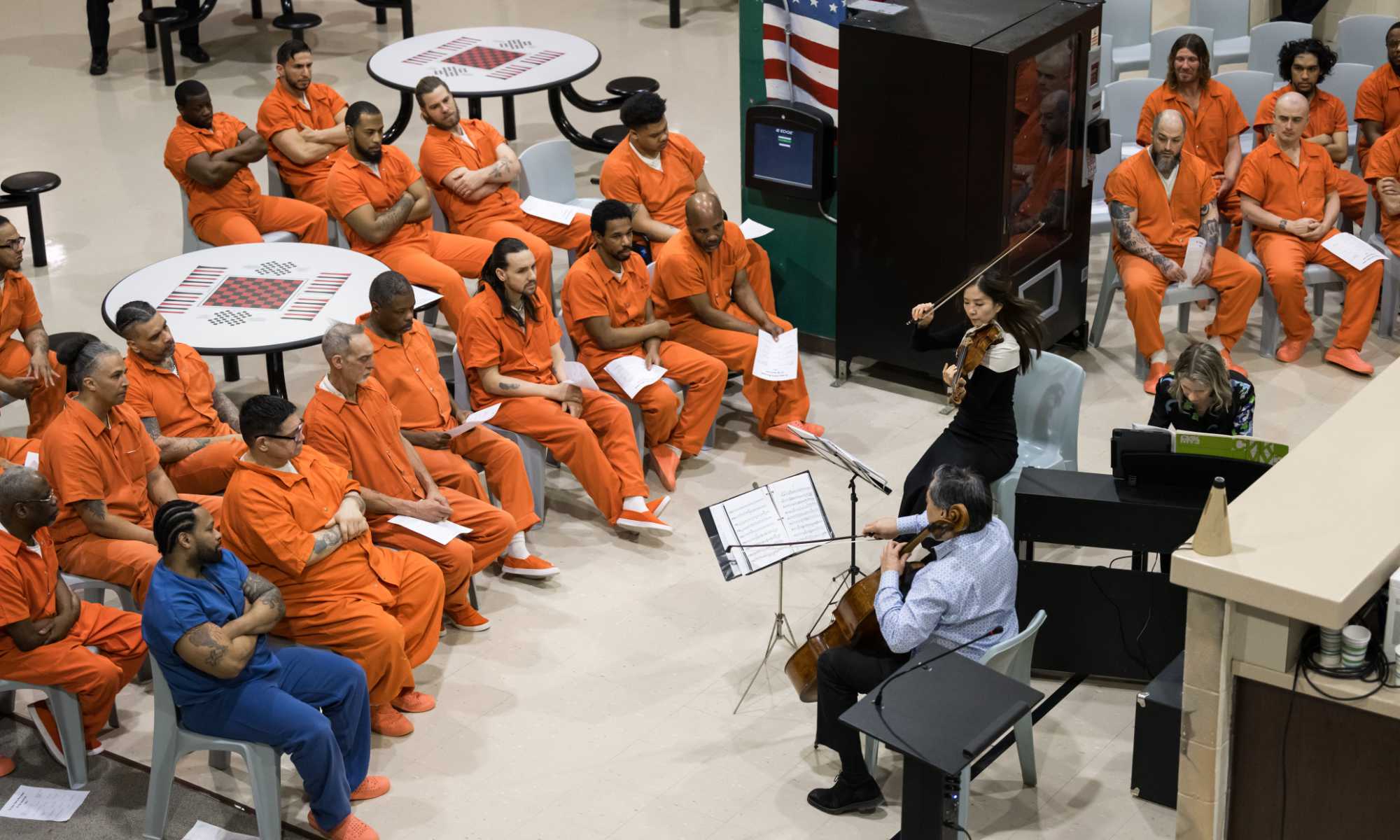A journey through film score history sets students on the path to understanding—and crafting—their own compositions.
A wicked witch releases a horde of flying monkeys. A police detective develops a debilitating fear of heights. A young boy takes an alien for a celestial bike ride. Odds are at least one of these descriptions conjures up not only an iconic visual but also a musical reference. Maybe it’s the swelling of strings or the insistent pulse of a bass line. Such is the power and lasting impression of a film score.
But how do you get from a filmed scene to musical intent to cinematic vibe to actual composition? And why is it important to understand what makes a great film score actually great?
In TH 425: Film Music Analysis, taught by Mark Watters, director of the Beal Institute for Film Music and Contemporary Media and an associate professor of contemporary media and film composition at the University of Rochester’s Eastman School of Music, students are guided through past and current film scores to understand why choices were made during the scoring process and how to implement that information and vocabulary into their own compositions.
“I’m very proud of this class,” shares Watters, who petitioned to have the course added three years ago. “It focuses on harmonic analysis and, most importantly, how these harmonies—and the orchestration—affect the dramatic impact of the cue.”
For Watters, the course curriculum and progression through the history of cinema draws out important questions: “What makes a piece of music sound scary? Or funny? What makes it sound like the scene is set in outer space or a French ballet rehearsal? How are themes created and manipulated to tell a character’s story?”
The scope of the films taught—from King Kong (1933) to Pollock (2000) to Alien (1979) to Lincoln (2012)—provides students with a broad knowledge of film score history, which leads to better informing the compositions that Watters has them create throughout the semester. Adding to the unique nature of the course, students aren’t directed toward a textbook but rather are asked to subscribe to the David McCaulley Film Scoring Analyses YouTube account.
And one session is taught by the Emmy Award–winning composer Jeff Beal ’85E, cofounder with his wife, Joan Beal ’84E, of the Beal Institute for Film Music and Contemporary Media and Distinguished Visiting Artist.
“Students must have at least a comfortable knowledge of music theory to take this class,” notes Watters. “All this leads to evaluating the success of whatever the intent was of the composer: What was the filmmaker wanting the audience to feel?”
Film Music Analysis
Instructor: Mark Watters, associate professor of contemporary media and film composition
On the Syllabus
Unit: The Early Years—1930s and 19th-century Romantic era influences
Featured score: The Wizard of Oz (1939) by Herbert Strothart
Assignment: Compose a short motif appropriate for a villain. It should have a pulse!
Unit: Bernard Herrmann: The most distinctive and influential composer of his generation
Featured score: Vertigo (1958): two cues; Psycho (1960): three cues
Assignment: Compose a 30-second piece that incorporates the same signature progression as the “Love Scene” in Vertigo: Major chord with an augmented 11th to a Minor 9 chord but without the 7th.
Unit: John Williams, Part 1
Featured scores: Jaws (1976), Star Wars (1977), E.T. the Extra-Terrestrial (1982), and The Empire Strikes Back (1980)
Assignment: Complete an analysis of an assigned excerpt from a cue from one of the Star Wars films.
Unit: Danny Elfman
Featured scores: Beetlejuice (1988) and Batman (1988)
Assignment: Compose a 12-bar piece that matches the quirkiness of Elfman’s earlier scores, such as Pee-Wee’s Big Adventure and Beetlejuice, or dark and brooding, like his score for Batman.
Unit: Romance and Christmas
Featured scores: The Curious Case of Benjamin Button (2008) by Alexandre Desplat and Belles On Ice (2008) by Mark Watters.
This story appears in the fall 2024 issue of Rochester Review, the magazine of the University of Rochester.




